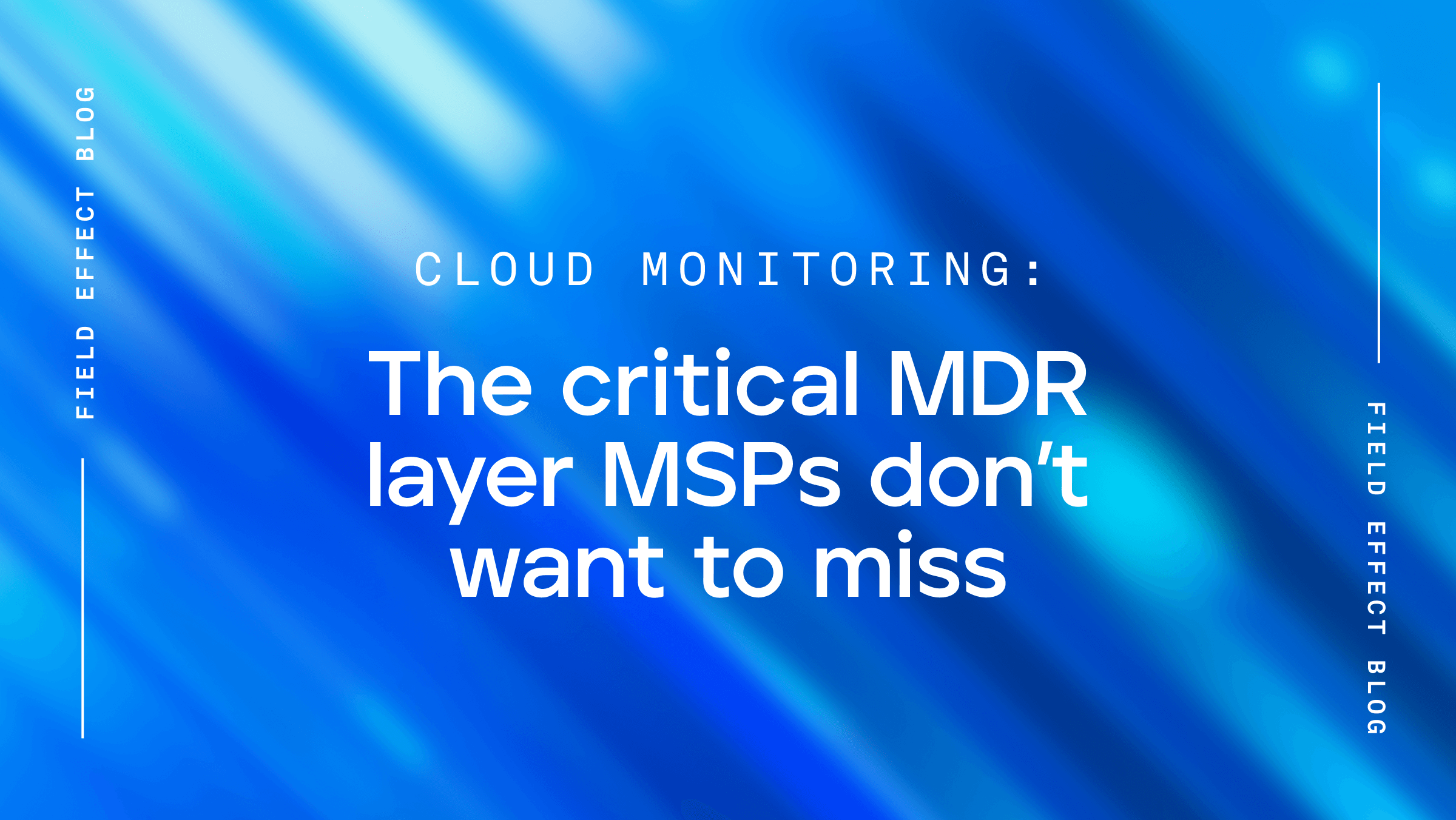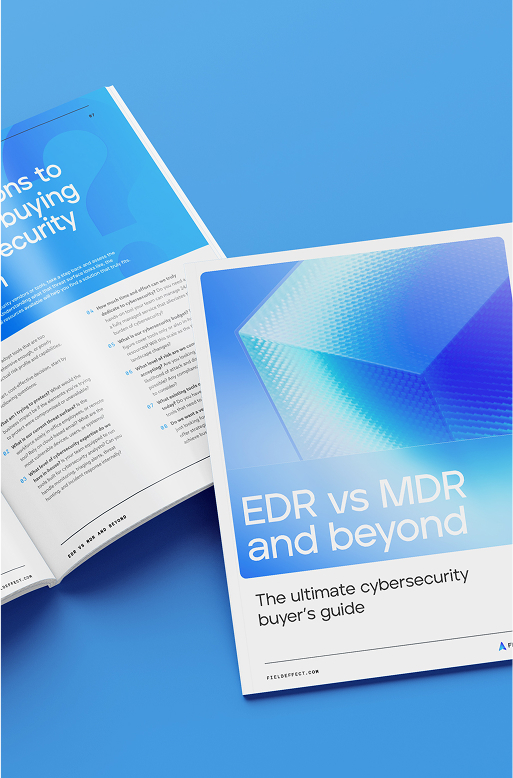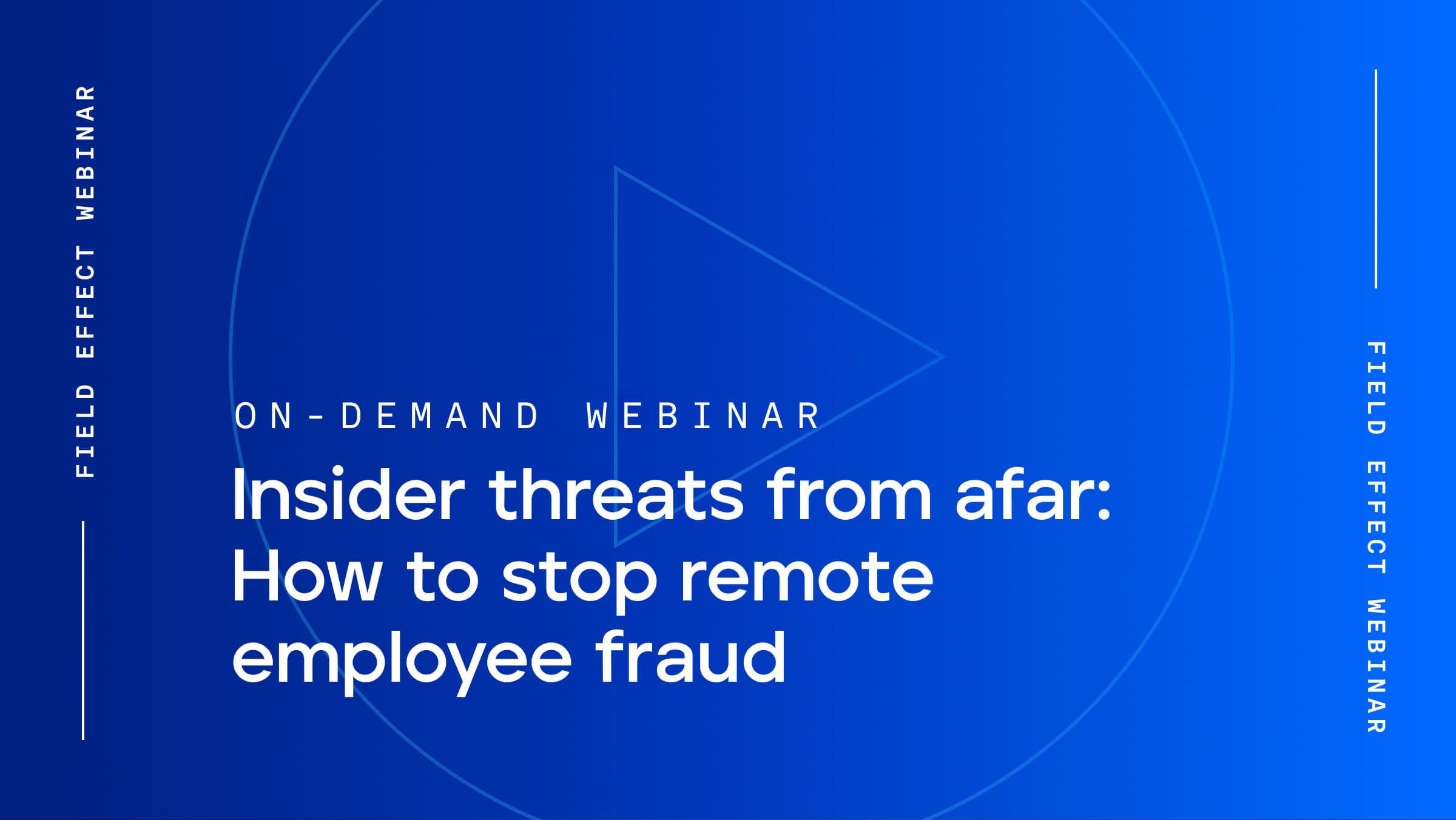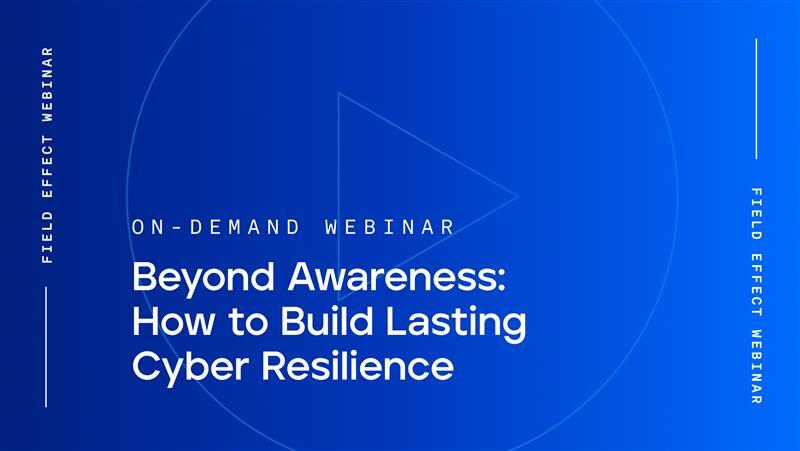
Blog Post
July 22, 2025 | Cybersecurity education
By Field Effect
Last updated: November 13, 2025
In the acronym-heavy world of cybersecurity, navigating the landscape of defense tools is tricky. Threat detection and response solutions such as MDR, XDR, and EDR are growing in popularity, particularly as cyberattacks grow more sophisticated and bypass traditional defenses such as firewalls and antiviruses.
Traditional defenses are often either too reactive—only responding to security incidents as they occur—or too reliant on indicators of known threats such as malware signatures. On the other hand, proactive solutions can help you stop attacks in their early stages or, even better, before they happen.

EDR vs MDR and beyond
Make sure you're making a smart buying decision with this ultimate guide.
You'll learn how EDR and MDR compare, plus strategic questions to vet vendors and their solutions.
EDR and MDR are two of the main types of detection and response that can help you proactively uncover the stealthiest and most complex attacks. But how do you know which one is best for your business? This article aims to dive into these offerings and help better inform your choice between endpoint detection and response or managed detection and response.
To truly understand EDR and MDR, it’s important to take a step back and closely examine the general class of security solutions and services focused on threat detection and response.
Threat detection and response can use any combination of software, behavioral analysis, AI, and threat intelligence to identify and neutralize known and unknown threats. Threat detection and response tools equip you with the speed needed to contain breaches and minimize both the damage and cost to your business.
While the most advanced and evasive cyber threats that evade your preventative defenses usually use new methods, code, or technologies, sometimes even known threats can slip by. This happens because there are several different types of detection and response technologies and services that come with their own capabilities and scope.
So, what makes an effective detection and response solution? One that actually works to keep your business safe from advanced threats without adding unnecessary complexity? There are a few key features to look for.
The most technical adversaries constantly tweak and refine their attack methods to maximize the chances of intruding undetected into networks and stealing data or conducting espionage. This hacker innovation is quite evident in the advanced forms of malware that can evade detection by antivirus and other preventative tools.
This evasiveness may come in the form of polymorphic malware that alters its own identifiable features. Other times, it includes fileless malware like DarkWatchman that hides in legitimate operating system functions, programs, and services.
Effective threat detection tools and services should use behavioral analysis to find anomalies and search for other indicators of attacks to help flag these more sophisticated forms of malware. Mere pattern-matching, as is the case with signature scanning, will struggle to detect or block advanced malware threats.
Alert fatigue is a huge problem in cybersecurity that plagues response to genuine incidents. Inundated with so many alerts from multiple systems, many of which end up being false positives, security analysts end up becoming numb to or ignoring important security alerts.
Even at large companies with over 5000 employees, security teams end up ignoring about 23% of the threat alerts they receive.
A pillar of any detection and response tool worth its value is that it should generate high-quality alerts. Good security alerts reduce time spent investigating false positives and ensure security teams focus on genuine threats, whether they’re occurring on endpoints, in the cloud, or on your network.
There will always be mountains of security data, especially with the rate at which businesses are adopting more devices and cloud-based services. A great cybersecurity solution, however, can distill all of this data down into understandable, actionable alerts.
Speaking of endpoints, the cloud, and your network environment, one way to distinguish between detection and response tools or services is in where they detect threats.
With IT ecosystems being more complex, endpoints aren’t limited to employee workstations, network traffic includes much more traffic originating from outside the physical perimeter of your company, and cloud infrastructure gets used to host more apps and data than ever.
Complete visibility into the IT environment is essential, especially across the most frequently targeted areas. Because without a clear view of this infrastructure, threat detection becomes guesswork. After all, you can't defend what you can't see.
Endpoint detection and response (EDR) tools excel at monitoring activity on endpoints and flagging suspicious behavior. By continuously collecting and analyzing data from devices, EDRs help detect and contain threats before they escalate.
Specifically, EDR tools provide:
The main compelling argument for EDR is that endpoints represent one of the main sources of malicious activity. In fact, 2019 research by the IDC found 70% of successful breaches started at the endpoint level.
Threat actors know that targeting end users and their devices drives up the success of their cyberattacks due to user susceptibility to phishing, undermanaged IT inventories, and a general lack of widespread cyber training and awareness.
When trying to decide between different tools, it’s important to consider how well the tool integrates with your existing stack of security solutions and whether your team is equipped to manage the solution.
Because while EDR provides critical capabilities, it requires significant time, tuning, and expertise to see real value. Threats can slip by if alerts are overlooked, misinterpreted, or addressed too slowly—which is often the case without an experienced team in place to manage the volume (and complexity) of alerts.
Managed detection and response (MDR) addresses a core cybersecurity challenge: limited in-house expertise and resources. By combining technology with 24/7 access to security professionals, MDR offers advanced threat detection, real-time response, and continuous protection—all while operating as an extension of your team.
As demand has grown, MDR has expanded beyond endpoint protection to include cloud, network, and vulnerability management. This evolution helps organizations simplify operations and unify their
security under a single service, simplifying management and strengthening their overall security posture.
As is often the case, MDR offerings can vary significantly in cost, scope, and effectiveness.
Some providers emphasize outcomes but lack the depth or responsiveness needed when it counts. Some providers use their own security platform; others integrate with the tools already in place. That’s why it’s critical to evaluate not just the technology, but the team, expertise, and service behind it.
The cybersecurity market is crowded, with every vendor claiming the latest breakthrough or essential feature. But buying cybersecurity is more than ticking off features. It’s about investing in outcomes: less risk, less complexity, fewer interruptions, and more confidence.
So, the question is less “what’s available?” and more “what do I need?”
Be sure to ask specific questions to better understand the maturity of the solution, the management capabilities being provided, how the alerting function works, and much more. Our Ultimate Cybersecurity Buyer's Guide offers a long list of strategic questions that you can ask to vet vendors and their solutions.
Now that you’re more informed about the choice between EDR vs MDR, taking a look at where the market is trending can provide a useful final bit of guidance. The MDR market is expected to grow to $5.6 billion by 2027 as more companies suffer from security staff shortages while also wanting to consolidate their cybersecurity tools or vendors.
Field Effect MDR delivers everything a business needs for great cybersecurity in one place—including the gold standard of endpoint agents, nonstop SOC coverage, and so much more. Book your demo here.


